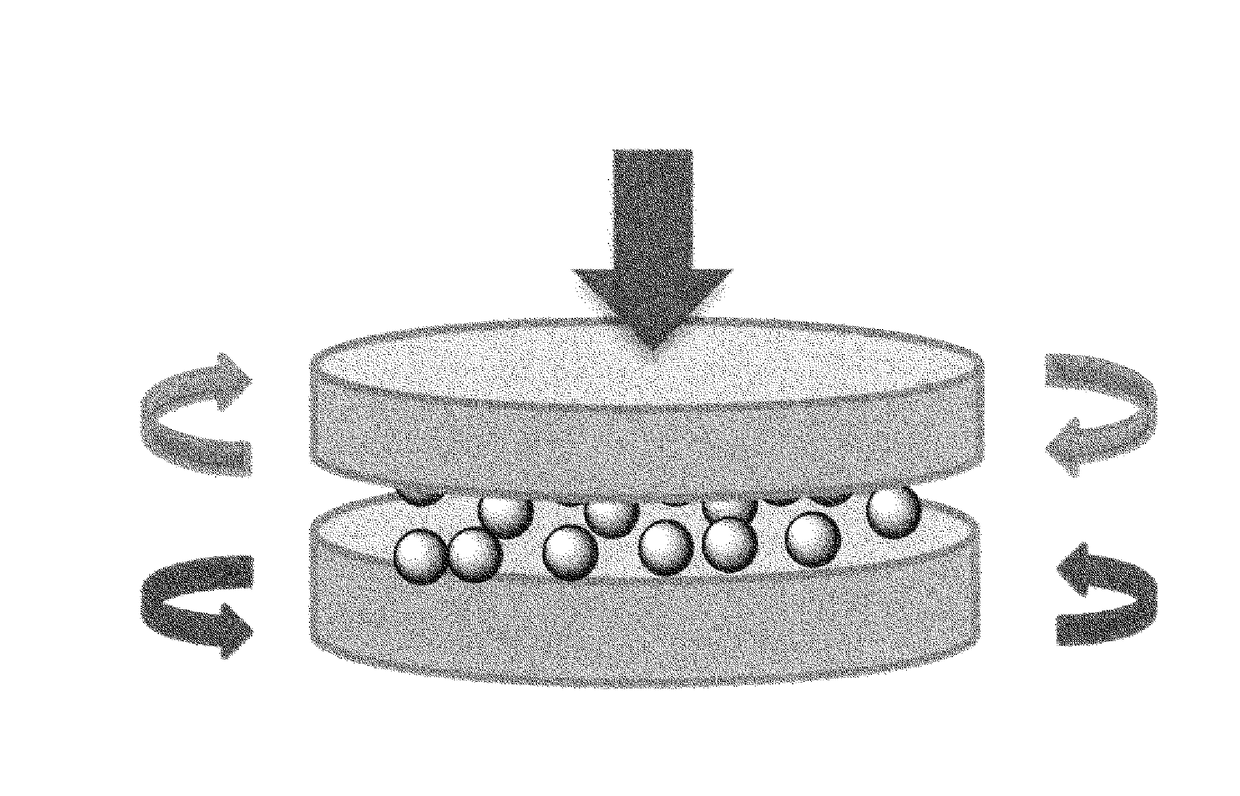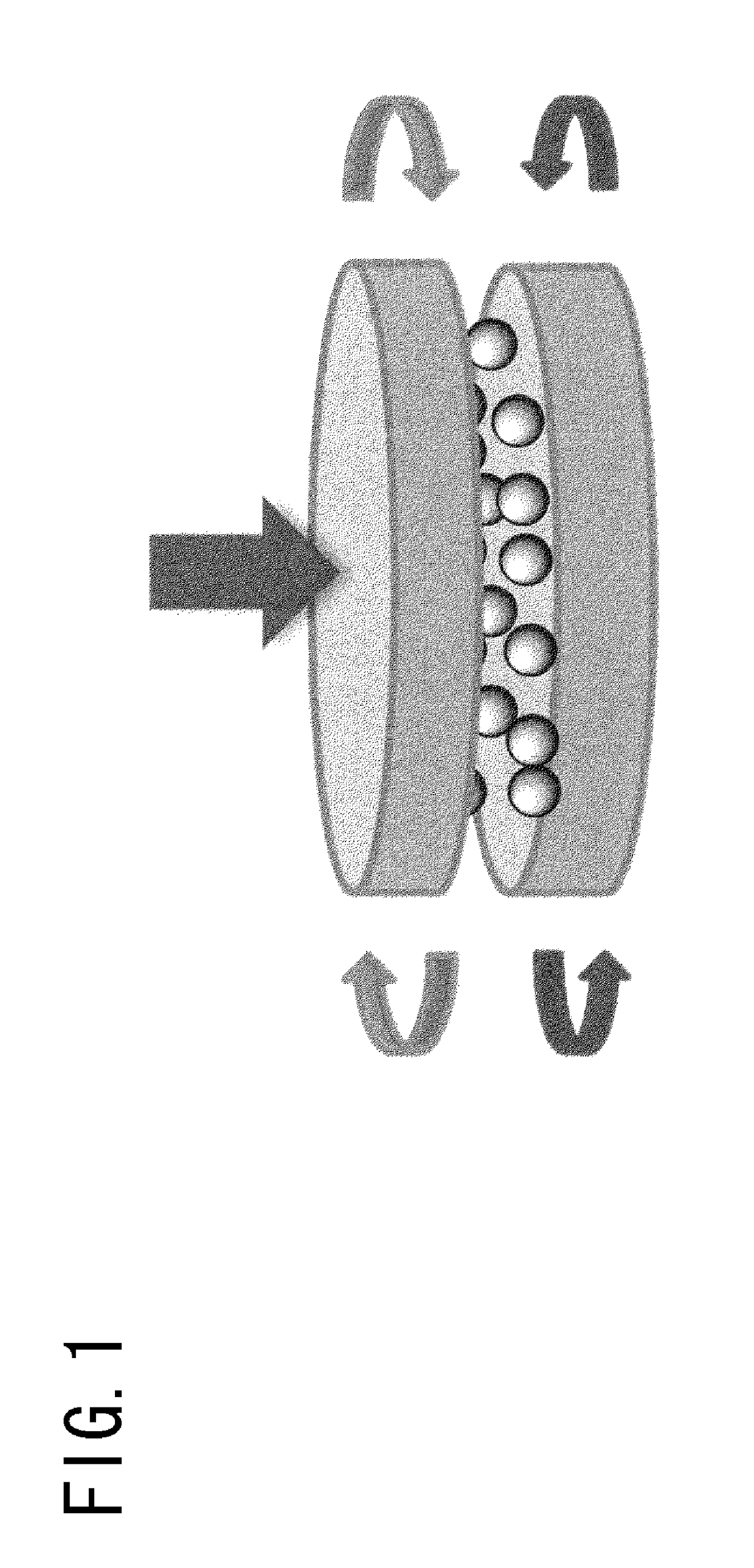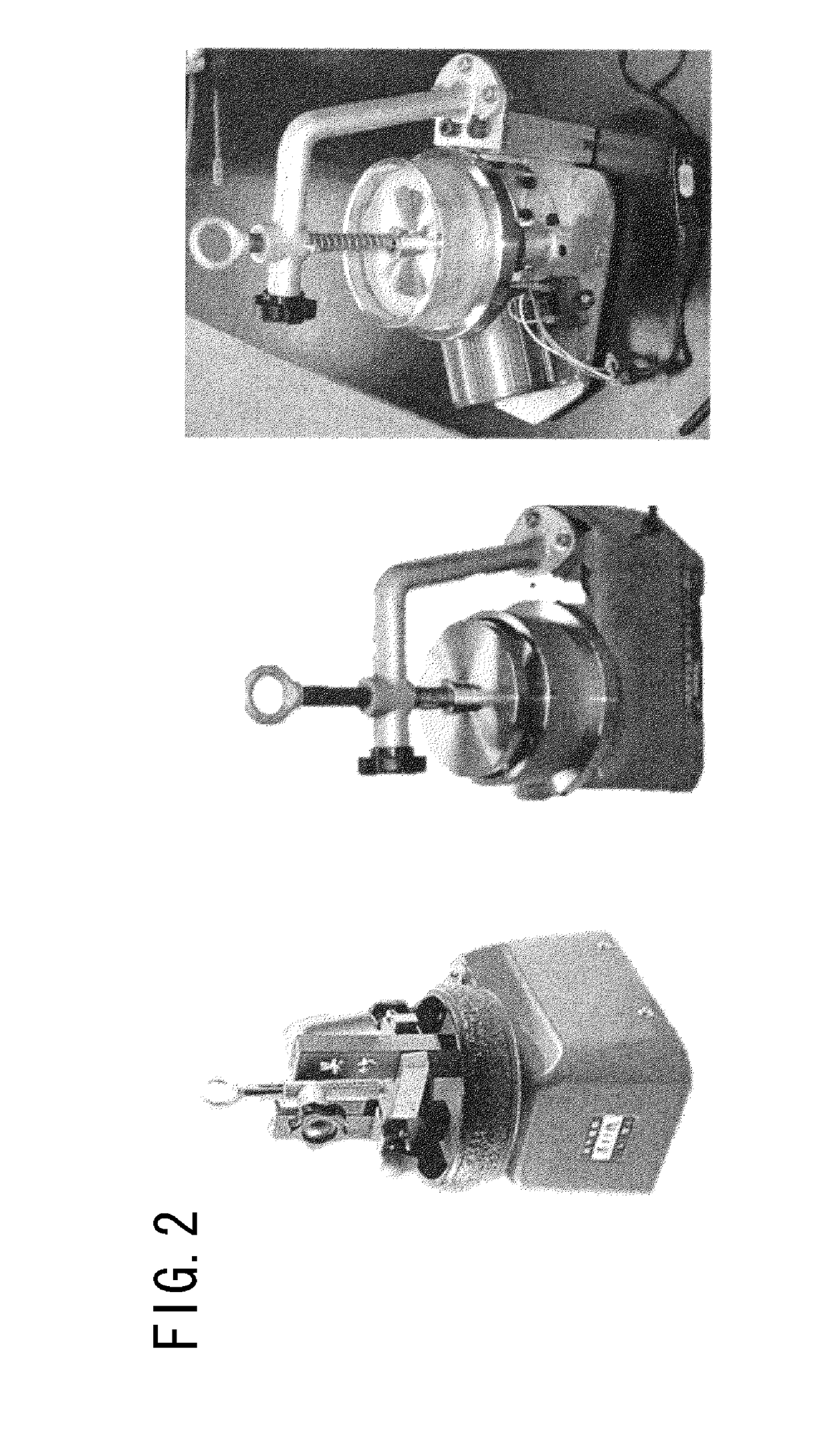Spherical diamond and manufacturing method for same
a technology of synthetic diamonds and diamonds, which is applied in the field of processing artificial singlecrystal diamonds, can solve the problems of synthetic diamonds that have found only very limited markets in their applications, cannot accept physical or chemical changes, and cannot be logically processed by abrasion with a harder material, so as to achieve the effect of reducing fuel costs, reducing frictional constants, and more useful industrial materials
- Summary
- Abstract
- Description
- Claims
- Application Information
AI Technical Summary
Benefits of technology
Problems solved by technology
Method used
Image
Examples
example 1
[0059]The ink-stone revolving mechanism of a commercial Chinese ink-stick motor grinder (FIG. 2 right) was removed and a SUS304 self-abrasion cylinder with an inner diameter of 103 mm, a depth of 30 mm and a thickness 6 mm was attached as shown in FIG. 4. In addition, the ink-stick holding mechanism was replaced with a SUS304 disk with a diameter of 100 mm, thickness 5 mm and a weight of 620 g, which was slid horizontally into the inside wall of abrasion cylinder, thus acting as a weight as well as cover. The modified set-up is called here as the second version of spheroidization apparatus. Twenty g of commercial microdiamond powder having an average diameter of 29 μm was placed in a thin space between the cover and bottom disc of the abrasion cylinder, which was then subjected continuous revolving by turning on the motor. However, the motor proved too small to drive heavy cylinder for a long time, and evolved much heat. When the temperature of outer wall of cylinder reached 70° C. ...
example 2
[0061]Using the same spheroidization apparatus as mentioned above, we managed to hang the heavy cover in exactly parallel position with the base of cylinder to avoid excessive friction between them and suppress heat evolution to allow longer and continuous operation. In the course of adjusting and running, we had a bad case of direct and strong contact between cover and base disks, which kept revolving for a few hours making sharp noise. Abraded microdiamond powder had developed intense black color, indicating contamination of SUS304 from the inner wall. Inspection under the digital microscope showed a large proportion of pulverized microdiamond particles (FIG. 7).
[0062]We sampled 177 pieces of microdiamond randomly and analyzed the distribution of Heywood diameter (FIG. 8). The histogram showed that about one third of the powder was fragmented into much smaller pieces and formed a second broad distribution centered at 14 μm in diameter (FIG. 8). The rest comprises the major peak at...
example 3
[0063]In contrast to Example 2, we encountered with an opposite result, wherein neither Heywood diameter nor circularity coefficient changed significantly before and after 12 hours of continuous operation. The t-Test confirmed this conclusion of no change. Although we did not measure the pressure, it seems that in this case the applied pressure was out of range. It is likely that the applied pressure was somewhat lower than the critical value. We will take advantage of this lesson in the design of the third and higher models in order to realize the desired spheroidization.
PUM
 Login to View More
Login to View More Abstract
Description
Claims
Application Information
 Login to View More
Login to View More - R&D
- Intellectual Property
- Life Sciences
- Materials
- Tech Scout
- Unparalleled Data Quality
- Higher Quality Content
- 60% Fewer Hallucinations
Browse by: Latest US Patents, China's latest patents, Technical Efficacy Thesaurus, Application Domain, Technology Topic, Popular Technical Reports.
© 2025 PatSnap. All rights reserved.Legal|Privacy policy|Modern Slavery Act Transparency Statement|Sitemap|About US| Contact US: help@patsnap.com



